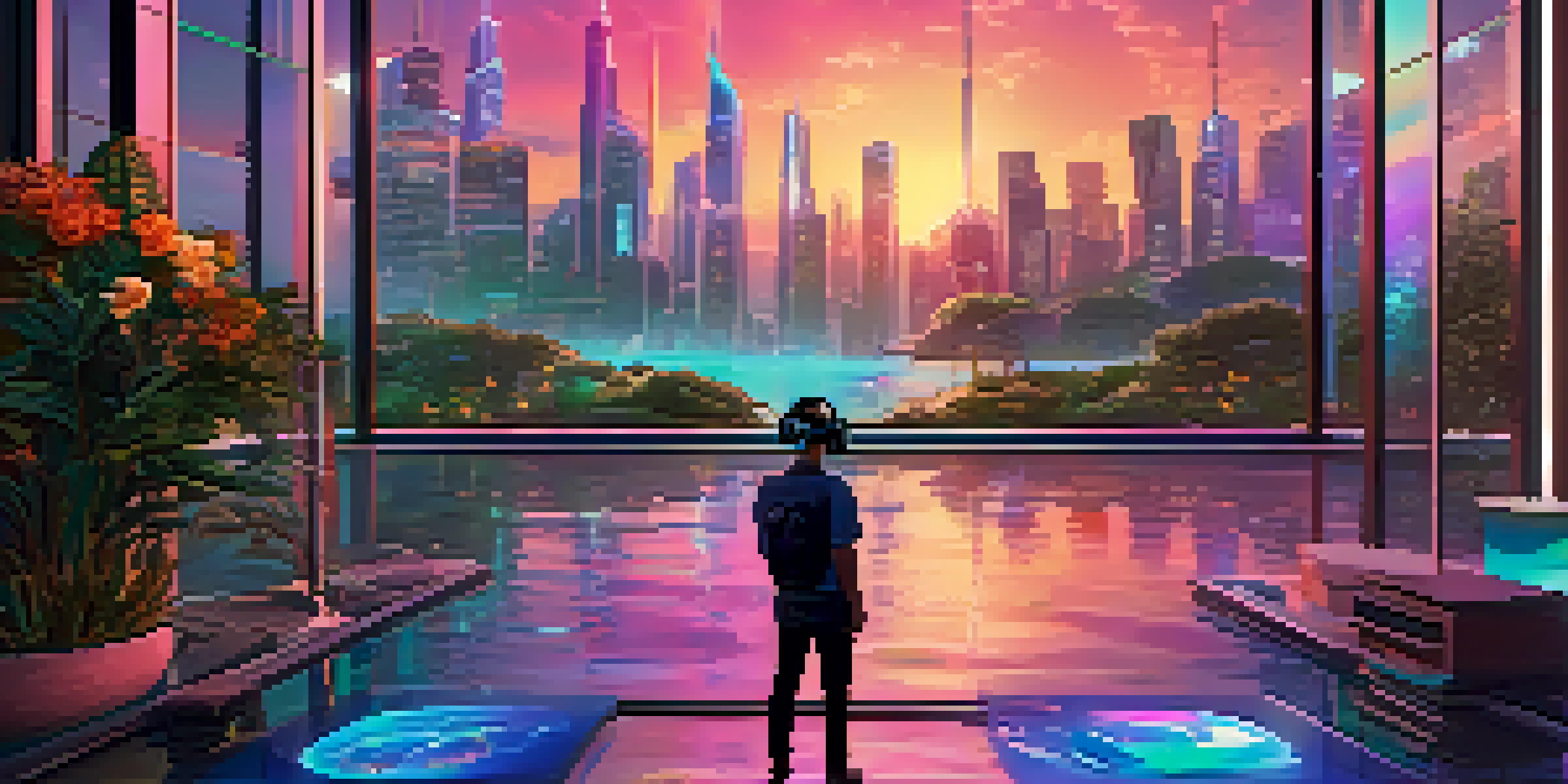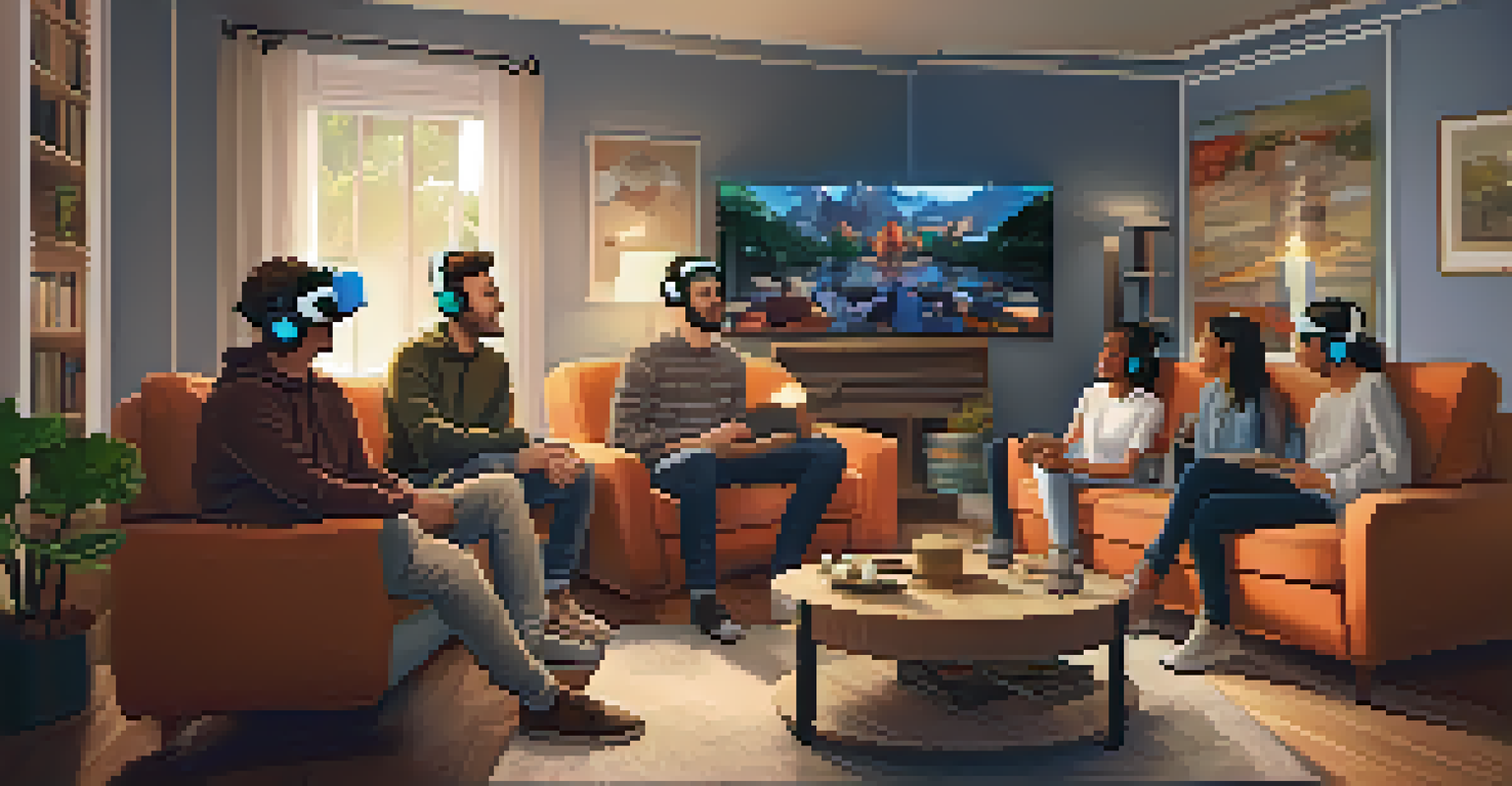Interactive Storytelling: VR's Influence on Hollywood Films

Understanding Interactive Storytelling and Its Appeal
Interactive storytelling is a narrative technique that allows the audience to influence the story's direction. This concept has gained traction in recent years, especially with advancements in technology. It creates a more immersive experience, making viewers feel like active participants rather than passive observers.
Interactive storytelling is the new frontier in the world of film, where the audience no longer just watches the story unfold but becomes a part of it.
In traditional storytelling, viewers follow a predetermined path, often leading to predictable endings. Interactive storytelling flips that script, giving people the power to make choices that affect the outcome. This shift not only enhances engagement but also deepens emotional investment in the characters and plot.
Imagine playing a video game where your decisions determine the fate of the protagonist. This same principle is now being applied in films, where viewers can steer the story, creating a unique experience tailored to their preferences. As this trend grows, we can expect to see more filmmakers experimenting with these interactive elements.
The Rise of VR Technology in Filmmaking
Virtual reality (VR) technology has revolutionized the way stories are told in film. With VR, audiences can step into a three-dimensional world, experiencing the narrative from the character's perspective. This level of immersion is unparalleled, offering a new dimension to storytelling that traditional films simply can't match.

Filmmakers are now using VR to create environments that viewers can explore freely, allowing them to interact with the story in real-time. This technology not only enhances visual storytelling but also encourages a deeper connection between the viewer and the narrative. For instance, imagine walking alongside a character, making choices that directly influence their journey.
Interactive Storytelling Engages Audiences
Interactive storytelling empowers viewers to influence the narrative, enhancing engagement and emotional investment.
As VR continues to evolve, its integration into Hollywood films is becoming more prevalent. Filmmakers are experimenting with different storytelling techniques, pushing the boundaries of conventional filmmaking to create groundbreaking experiences. The potential for creating emotionally resonant stories through VR is immense, promising a future where viewers are truly part of the narrative.
Case Studies: Successful Integration of VR in Films
Several films have successfully integrated VR elements, showcasing its potential to enhance storytelling. A notable example is 'The Invisible Man,' which used VR to create an immersive experience that allowed viewers to explore the protagonist's fear and paranoia. This innovative approach engaged audiences in a way that traditional films often fail to achieve.
The future of cinema lies in the hands of the audience, where every choice can lead to a different adventure.
Another compelling case is 'The Walking Dead: Our World,' a mobile game that incorporates VR elements, allowing fans to experience the zombie apocalypse firsthand. By blending VR with traditional storytelling, the creators developed a narrative that users could interact with, making them feel like part of the action. This kind of engagement is what makes interactive storytelling so appealing.
These examples illustrate how VR can elevate a film's narrative by creating a more engaging experience. As filmmakers continue to experiment with VR, we can expect to see more films that challenge traditional storytelling norms and offer audiences a chance to experience stories in innovative ways.
Challenges of Incorporating VR into Filmmaking
While the potential of VR in filmmaking is exciting, there are significant challenges to overcome. One major hurdle is the technical expertise required to create high-quality VR experiences. Filmmakers must invest in learning new skills and tools to effectively harness VR technology, which can be a daunting task.
Additionally, creating a seamless narrative that allows for interactivity without compromising the story's integrity is complex. Filmmakers need to strike a balance between providing choices and maintaining a cohesive storyline. If not done carefully, the interactive elements can detract from the emotional impact of the film.
VR Transforms Filmmaking Experience
Virtual reality technology creates immersive environments that allow audiences to experience stories from the characters' perspectives.
Lastly, the accessibility of VR technology for the average viewer poses a challenge. Not everyone has access to VR headsets or the necessary equipment to experience these films fully. As the industry evolves, finding ways to make VR storytelling accessible to a broader audience will be crucial for its success.
How VR Enhances Character Development in Films
One of the most significant advantages of VR storytelling is its ability to enhance character development. By placing viewers in the shoes of a character, VR allows for a deeper understanding of their motivations and emotions. This immersive experience can create empathy and connection in ways that traditional storytelling struggles to achieve.
For example, VR can enable viewers to witness pivotal moments in a character's life, making their struggles and triumphs feel more personal. Imagine experiencing a character's memories or pivotal decisions firsthand—this level of intimacy fosters a profound connection that resonates long after the experience ends. It transforms the viewer's relationship with the character, making their journey feel more impactful.
As filmmakers embrace VR technology, we can anticipate more stories that prioritize character-driven narratives. By utilizing VR to explore characters' inner worlds, filmmakers can craft richer, more complex stories that resonate with audiences on a deeper level.
The Future of Interactive Storytelling in Hollywood
The future of interactive storytelling in Hollywood is bright, with endless possibilities on the horizon. As VR technology continues to advance, filmmakers will likely explore new ways to captivate audiences and create unforgettable experiences. This evolution promises to reshape the landscape of storytelling in film, challenging conventional norms.
One exciting prospect is the potential for collaborative storytelling, where multiple viewers can influence a single narrative simultaneously. This could lead to unique, shared experiences that foster community engagement and discussions around the story. Imagine watching a film with friends, making choices together and shaping the outcome as a group.
Character Development Through VR
VR enhances character development by providing viewers with intimate experiences that foster empathy and a deeper connection.
As audiences become more accustomed to interactive experiences, the demand for innovative storytelling will grow. Filmmakers who embrace this trend will not only capture viewers' attention but also set themselves apart in an increasingly competitive industry. The fusion of VR and interactive storytelling is poised to redefine how we experience films, heralding a new era of cinematic creativity.
Conclusion: Embracing the Interactive Revolution
In conclusion, interactive storytelling through VR is transforming the very fabric of Hollywood filmmaking. By offering audiences an immersive experience, filmmakers can create deeper connections with their stories and characters. This evolution not only enriches the viewing experience but also paves the way for innovative narratives that challenge traditional norms.
As we look to the future, embracing this interactive revolution will be key for filmmakers and audiences alike. The potential for creating emotionally resonant, participatory stories is vast, promising a new era of storytelling that is as engaging as it is impactful. The possibilities are endless, and the journey has only just begun.

Ultimately, the marriage of VR and interactive storytelling is set to redefine our relationship with film. As audiences, we can look forward to a future where our choices shape the stories we love, making each viewing experience unique and unforgettable.